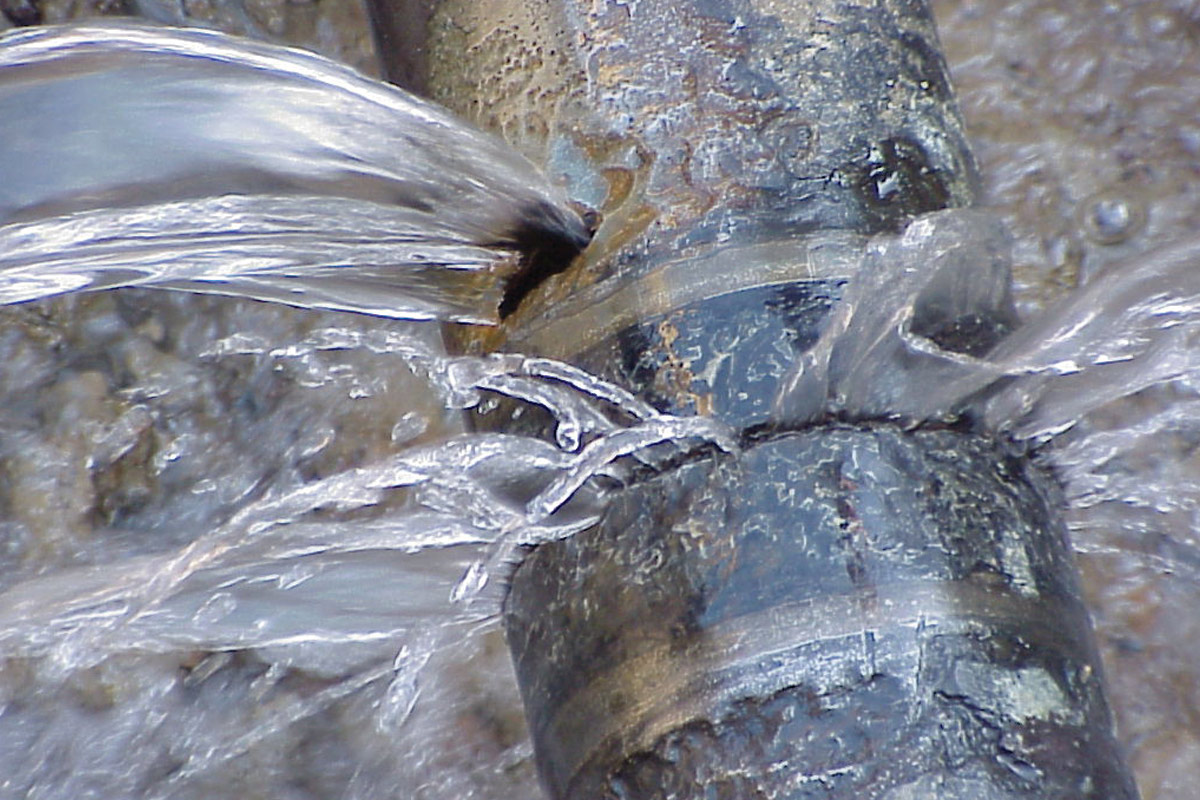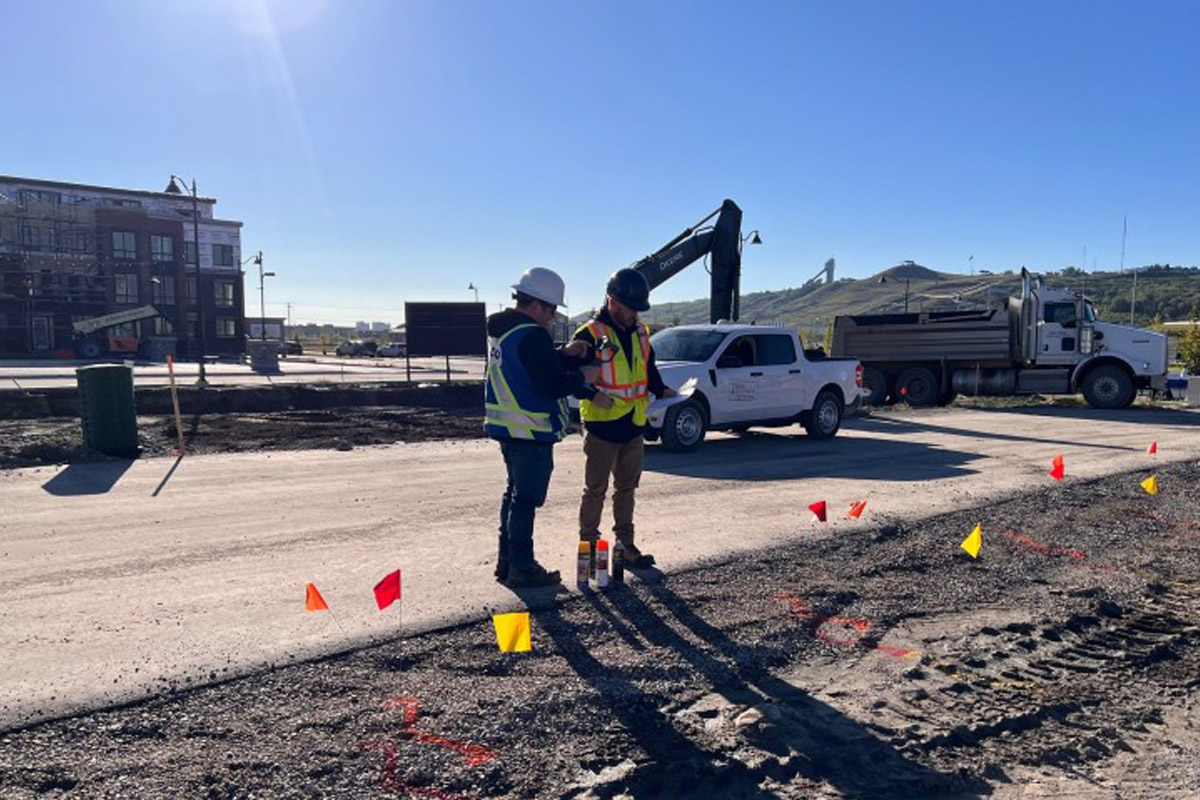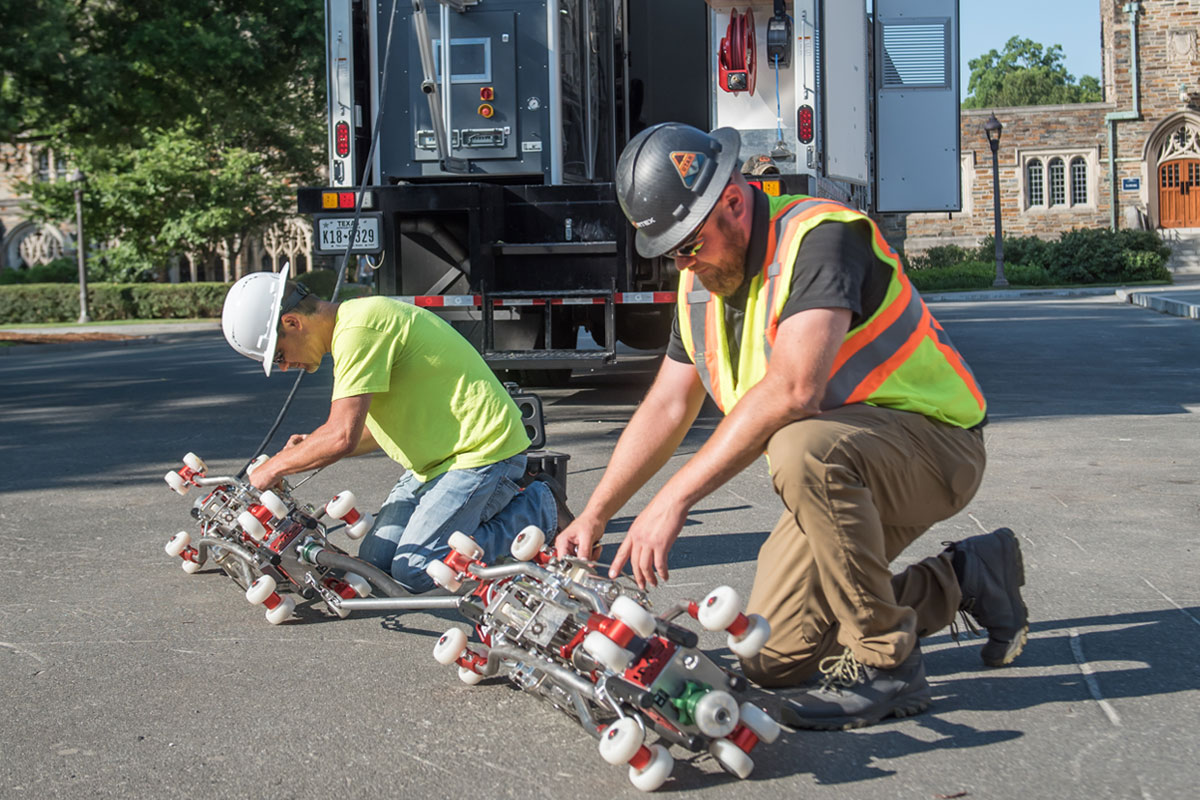
Choosing the Right Antenna for GPR Investigations
Look for the highest frequency that can detect objects at the desired depth
Antennas used with ground penetrating radar (GPR) come in different shapes and sizes. The largest antennas typically radiate the lower frequencies necessary to detect the deepest targets. The smallest antennas radiate the highest frequencies that provide the greatest resolution required to detect small, shallow targets. The “best” antenna for a job is the one with the highest frequency that can still detect objects at the desired depth.
Importance of selecting the right antenna for the desired depth
Selecting the right antenna frequency for a GPR job depends on the size and depth of the target. A lower frequency antenna will provide deeper penetration, but targets must be larger to be detected.
If the antenna frequency is too high, the maximum detection depth may be less than needed to find the desired target. The GPR image quality deteriorates with increasing depth to the point where no reflections can be observed. Conversely, if the antenna frequency is too low, fine details are lost. For example, closely-spaced shallow targets cannot be identified because they may appear as a continuous reflection band.
When assessing which antenna to choose for a job, consider surface cover and soil conductivity – How well does the soil, asphalt, or concrete let an electrical current pass through it? For example, asphalt typically has low conductivity, while concrete conductivity varies depending on its curing state, wetness, and composition.
Also consider the presence of metal reinforcing between the surface and the target. The tighter the rebar or mesh spacing, the more difficult it is to achieve the desired depth penetration.
When looking only 1 to 2 ft beneath the surface, use a higher frequency GPR antenna, which offers greater detail. Those looking at deeper targets or characteristics can use lower frequency antennas that see deeper; however, one trades off the ability to resolve smaller or very shallow features and targets.
When scanning utilities, mid-range antennas provide sufficient resolution to find 4- to 5-in. pipes at 4 to 5 ft deep. For mapping geological features 20 to 50 ft deep, low frequency antennas will work, because very high resolution is not required.

Antenna selection based on understanding customer goals
Mark DeSchepper, President of Kansas-based Echo GPR Services, has more than 12 years of GPR experience and has performed nearly 8,000 GPR scans across the United States.
According to DeSchepper, antenna selection should be based on a pre-job conversation that establishes an understanding of the depth of the investigation and what the customer wants to accomplish. Comfort, convenience, and safety when working on a ladder or overhead should also be considered.
For simple concrete cutting or core drilling, Echo GPR opts for one of the higher frequency antennas. He usually reaches for the 2600 MHz antenna first because it gives the highest resolution. If the project is in a thicker concrete environment, he will switch out to a 1600 MHz antenna, which is a very sharp resolution antenna that can penetrate a bit deeper into the ground.
With difficult working conditions, like working upside down and on a ladder with hands above the head, antenna selection should be based on comfort and convenience.
For example, Echo GPR worked on a remodeling job with a steel erection company locating rebar prior to anchor-drilling steel plates for support mounts. He used a 2 GHz Palm antenna, which gave him high resolution data with a good depth of penetration, while being extremely lightweight.
 The 2 GHz Palm antenna was also a good choice at a hospital that was building nine stories of research labs on top of an existing parking deck. Contractors needed to thread new vertical rebar into form savers that were buried in concrete. The form savers have a profile of ¾ to 1 in. in diameter and are capped with a piece of plastic. Contractors could not locate the form savers and called in Echo GPR to help locate them. With the Palm, Echo located the plastic-capped rebar thread couplers in the Z axis.
The 2 GHz Palm antenna was also a good choice at a hospital that was building nine stories of research labs on top of an existing parking deck. Contractors needed to thread new vertical rebar into form savers that were buried in concrete. The form savers have a profile of ¾ to 1 in. in diameter and are capped with a piece of plastic. Contractors could not locate the form savers and called in Echo GPR to help locate them. With the Palm, Echo located the plastic-capped rebar thread couplers in the Z axis.
Locating sewer lines and drain pipes
The best antenna choice for those who want to install new drain lines but do not know where the existing sewer is would be a 400 MHz antenna or the 350 MHz digital antenna with HyperStacking (HS) technology, which allows users to look for larger targets 6 to 8 feet below ground.
For those looking for clay tile pipe drain lines in clay soil, the newer 350 MHz HS digital antenna offers a clearer image than a traditional GPR antenna and a 50 percent improvement in depth penetration. It also works with the newer control unit they use (the GSSI SIR 4000), which has the power and flexibility to image these more difficult targets.
When working for a geotechnical company at a property where there are sinkholes or underground caves, Echo GPR uses a 100 MHz bistatic antenna, which enables the company to scan more than 20+ feet down, while mapping out soil layers and deeper anomalies.
Selecting the correct antenna for achieving the depth penetration required can sometimes be tricky – mainly because actual field conditions may be different than those given to the GPR crew.
Field conditions can make antenna selection more challenging
For example, contractors asked Echo GPR Services to scan an area prior to cutting a hole for installing new equipment. He began by using the 2600 MHz antenna, but could not see the bottom of the concrete. This was a definite red flag, since the contractor said the concrete was 8 inches thick and the 2600 MHz can see targets up to 12 in. deep. He then switched out to the 1600 MHz – and found that the concrete was actually 18 in. thick. Luckily, he was able to call the concrete cutting company and they came out with the right equipment to cut through the concrete.
Antenna selection should be based on a thorough understanding of what the customer wants to accomplish, as well as comfort and convenience when working on a ladder or overhead.




